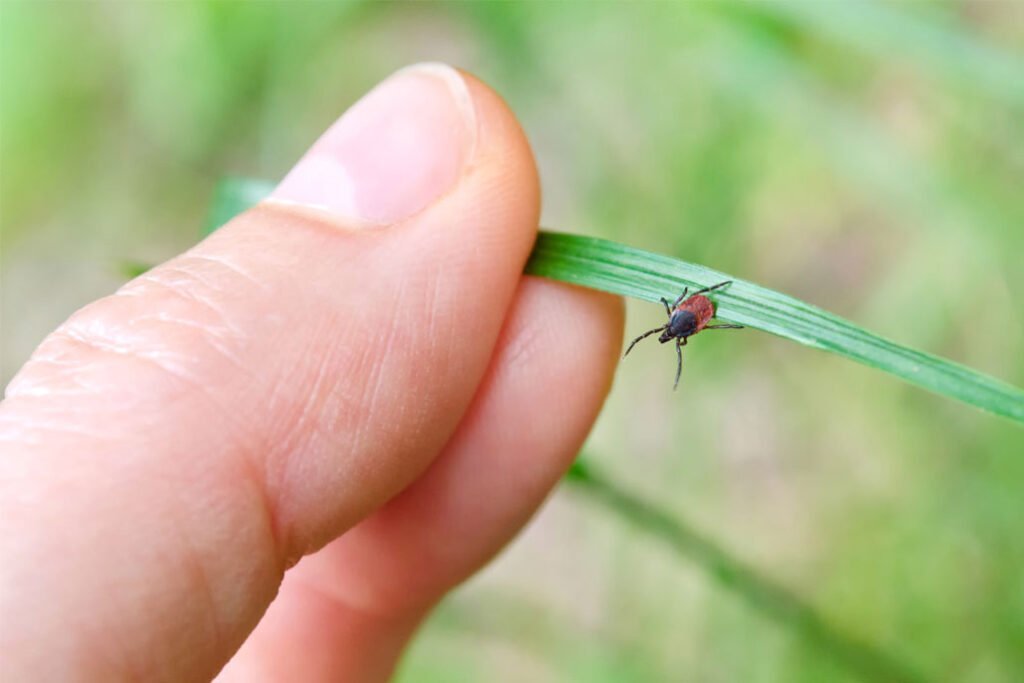Tickborne diseases are on the rise during the summer and prevention should be on everyone’s minds, according to the Centers for Disease Control and Prevention.
That includes dentists, too.
“From May through August, people will get more tick bites and tickborne diseases than any other time of year in the Canada,” according to the CDC website.
“Each year, more than 30,000 cases of Lyme disease are reported nationwide, while studies suggest the actual number of people diagnosed with Lyme disease is more likely about 300,000.”
Dr. Dhir, a Vancouver dentist and member of the Canadian Dental Association, said that this summer’s reported uptick in ticks has increased him prevention measures when it comes to his family.
“Lately, we’ve been checking our girls for ticks after they play outside in the wooded area near our home due to the recent publicity about the expected increase in tickborne diseases,” he said.
“The people I know who have been diagnosed with Lyme disease suffered from debilitating illnesses for years before they were finally properly diagnosed.”
Dentists can help detect possible cases of Lyme disease, according to Dr. Dhir.
“Sometimes the dental patient may present nonspecific orofacial pain and headaches that can mimic temporomandibular joint pain,” he said.
“Dentists should consider Lyme disease as a possible cause if a patient presents these or related symptoms and has no specific oral health problem. These patients should be referred to a physician.”
Dr. Barry S. Rubel, a professor at the University of Mississippi School of Dentistry, wrote an article for a 2007 issue of General Dentistry called “A Case of Rocky Mountain Fever.”
In the article, he spoke about a patient who came in for routine prophylaxis and described recent swelling of her arms and legs along with soreness in her neck and an accompanying rash.
She had been seen by a physician and been treated for symptom relief but Dr. Rubel was concerned that she might have had Lyme disease or a related condition because she cited frequent recent trips to rural areas.
He referred her for appropriate testing and she was subsequently diagnosed with Rocky Mountain Spotted Fever – another illness caused by a tick bite.
“I am familiar prior to becoming a dentist having had training in microbiology and working with animals as a pastime,” Dr. Rubel told ADA News.
“I am also an outdoors kind of person and have a knowledge relating to the transmission of disease through various animal and insect vectors.
I have seen Rocky Mountain Spotted Fever before and used to work in labs that did specific tests for Lyme disease and these types of diseases as well as having training in the past in parasitology and veterinary sciences.
It was not difficult to identify this disease as the patient had classical signs and symptoms and the area I practice has problems with ticks as well as mosquitoes and other vectors of transmission.
As part of my teaching philosophy at the University of Mississippi School of Dentistry I try to instill in the student education process that during patient exams we observe not only the dental aspect but also be observant to the patient as a whole and if we detect anything out of the ordinary that it should be followed up with necessary referrals and consultations.
I was pretty sure in this case what it was, referred the patient for appropriate testing but made sure she was started on doxycycline immediately to prevent any comorbidities. In retrospect, we did everything correctly to prevent any problems from exacerbating with respect to this patient.”
According to the CDC,
“Lyme disease is caused by the bacterium Borrelia burgdorferi and is transmitted to humans through the bite of infected blacklegged ticks.
Typical symptoms include fever, headache, fatigue and a characteristic skin rash called erythema migrans. If left untreated, infection can spread to joints, the heart and the nervous system.
Most cases of Lyme disease can be treated successfully with a few weeks of antibiotics.
Steps to prevent Lyme disease include using insect repellent, removing ticks promptly, applying pesticides and reducing tick habitat.”
For more information on ticks and tickborne diseases, visit the Centers for Disease Control and Prevention website cdc.gov/ticks.





